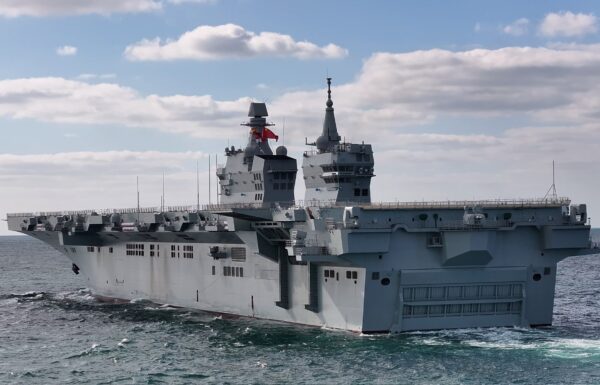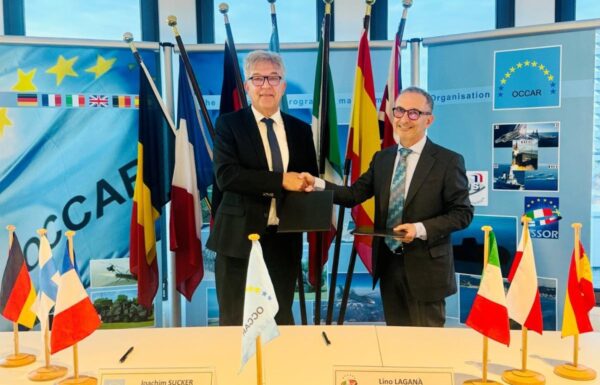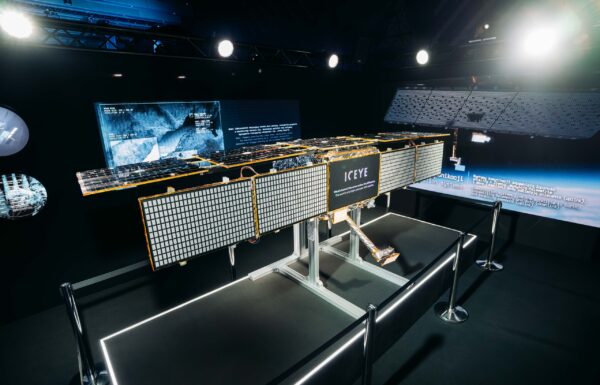On Friday, 14 November 2025, the CNS Sichuan (51), a Type 076 universal amphibious assault ship (NATO reporting name: Yulan), left the Hudong–Zhonghua shipyard of the state-owned China State Shipbuilding Corporation (CSSC) in Shanghai and began its first sea trials. It is currently the largest LHD (Landing Helicopter Deck) vessel ever built in the world.
 Photo: People’s Liberation Army Navy
Photo: People’s Liberation Army Navy
The first information about the construction of the new class of ship appeared in November 2023, the christening took place on 27 December 2024, and it was subsequently launched in the shipyard basin. Afterwards, mooring trials of the propulsion system, as well as software and electronic systems tests, were carried out. The ship has now begun the first stage of sea trials in the East China Sea, during which the operation of all onboard systems will be verified, including the propulsion system (according to available information, it returned to the shipyard after three days – editor’s note).
Although there are no details on how many such ships are to be built for the People’s Liberation Army Navy, it was described during the christening as the first vessel of its type. It is worth noting that the trials of the future CNS Sichuan (51) began exactly one week after the commissioning of the newest aircraft carrier, the CNS Fujian (CV-18), Type 003.
According to available information, the ship’s hull is 252.3 m long and 45 m wide, while the flat flight deck is 260 m long and 52 m wide. Its standard displacement is to exceed 40,000 tonnes, with full displacement estimated at around 50,000 tonnes. For comparison, the four Type 075 helicopter assault ships (NATO: Yushen) entering service measure 237 m in length, 43 m in width, and displace 36,000–40,000 tonnes fully loaded. Meanwhile, the newest U.S. America-class amphibious assault ships are 257 m long, 32 m wide, and displace 45,693 tonnes fully loaded (two in service, two under construction, one ordered, and six planned for a total of eleven).
The newest ship is reportedly powered by two gas turbines, each producing 21 MW, and six diesel generators, each producing 6 MW, generating a combined output of 78 MW (105,000 hp) transmitted to electric motors, forming an Integrated Electric Propulsion (IEP) system. This layout is also due to the fact that the ship is equipped with a single electromagnetic catapult (the aforementioned Fujian has three – editor’s note).
Below the flight deck, there is an aircraft hangar, from which aircraft will be brought up via two elevators, while a smaller aft elevator is used for ammunition transport. The ship will likely operate unmanned aerial vehicles such as the newly developed combat-capable Guizhou WZ-7 Soaring Dragon, Hongdu GJ-11, or Feilong 2 (Flying Dragon-2), as well as various types and classes of helicopters. The hangar will also accommodate two Type 726 Yuyi landing hovercraft.
Another characteristic feature is the presence of two islands forming the superstructure – a solution similar to that used, for example, on the British Queen Elizabeth-class aircraft carriers or HD Hyundai Heavy Industries’ proposal for the South Korean CVX aircraft carrier.
https://t.co/HaEbxiJ08R https://t.co/xXHkXGuEz6
— China Military Bugle (@ChinaMilBugle) November 16, 2025
#China's largest and most advanced amphibious assault ship CNS Sichuan returned to its shipyard in #Shanghai on Sunday afternoon after completing a three-day maiden voyage, the PLA Navy said. https://t.co/urCjjZI7rz pic.twitter.com/7lmkBEgU2R
— China Daily (@ChinaDaily) November 16, 2025
The first Type 076 – aka the „Sichuan“ – has returned home after its first three days at sea.
Official high-resolution photos of the sea trial have been released. pic.twitter.com/pKSwsFNGGU
— @Rupprecht_A (@RupprechtDeino) November 16, 2025
At around 5 pm on Sunday, Chinese People's Liberation Army (PLA) Navy warship the Sichuan successfully returned to the shipyard pier after completing its three-day maiden navigation test mission, the Xinhua News Agency reported. pic.twitter.com/YfcwOVASlH
— Global Times (@globaltimesnews) November 16, 2025






























